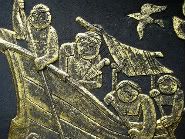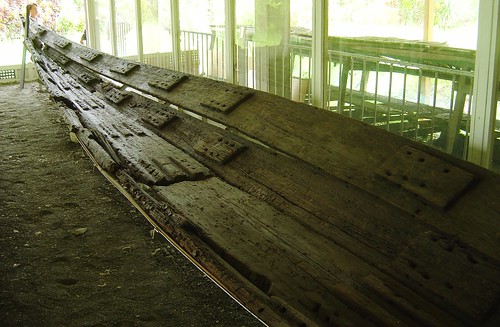Butuan and Balanghai - A Journey Through Time
I'm about to sleep and I stumble to this blog post. I really find this one very interesting.
We usually hear this word around this time of summer as we usually equate it with the city’s display of culture and tradition as well as its opportunity to show the development highlights it has travailed in its a thousand years of existence, from an influential maritime kingdom in the Sri Vidjayan and Madjapahit Empires, to a gold finders paradise in the early 20th century… to a booming timber-town in the 50’s. From a fragile, perennial calamity hit locality… to a rising highly urbanized regional capital of today…to that of vigorous shining metropolis in the near future. Let us again take a review of Balanghai, and how this great Indo-Malay word came to represent this city’s journey through the past millenia.
 Since the 10th century, Butuan appeared to have been in good relations with the Srivijayan Empire. Being located on the coast of Mindanao, balanghais are often docking at the Butuan bay keeping good business between the local people of Butuan and traders from the neighboring empire.
Since the 10th century, Butuan appeared to have been in good relations with the Srivijayan Empire. Being located on the coast of Mindanao, balanghais are often docking at the Butuan bay keeping good business between the local people of Butuan and traders from the neighboring empire.During the 1970’s, these balanghais were exposed through an excavation to the modern time and found that through carbon-dating process, the boats were almost a thousand years old.
Building balanghai requires teamwork and unity among workers which is why it was used by the Philippine Government as a term to refer to the smallest political unit, now became popularly pronounced as barangay.
Butuan’s Early Balanghais
A balanghai, or some refer to it as balangay, is a wooden boat adjoined by planks, and believed that the term originated from an Italian archaeologist named Antonio Pigafetta in the 16th century when he mentioned the word spelled “balanghai”.
The balangays did not serve just a wooden boat but stood as a symbol for social unit. In the 16th century, Spaniards found out that balangay also referred to the smallest unit of politics among Filipinos.
Late 1970’s, balangay boats were discovered in Butuan City by the National Museum archaelogists. Nine were recovered during the excavation. The first is being presently preserved and displayed in the museum in Libertad, Butuan City. It had undergone carbon-dating and dated at year 320. The second boat, dated 1250, is presently located at the Maritime Hall of National Museum in Manila. The third was transferred to Butuan Regional Museum while the six other boats are under the process of excavtion and preserved, remaining to their original waterlogged condition to protect the artifacts.
The Historical Butuan
The city of Butuan is the home of treasures such as the Tara, golden figurine of Buddha’s consort, an array of lustrous, most intricate jewelry, a collection of priceless ceramics from the Sung Dynasty, and the remains of the early balanghai.
These precious treasures of Butuan are now found around the globe. The Tara is now at the Field Museum in Chicago, the Chinese precious findings and the restored balanghais are being displayed at the National Museum, and the incomparable gold jewelry is the Metropolitan Museum of Manila’s grandest collection.
The first mass in the Philippines is believed to have taken place near the Agusan River, and it is said that Ferdinand Magellan himself dropped the anchor of the ship in 1521 at the Agusan River, and held a mass to commemorate the event.
BALANGHAI FESTIVAL
The Festival
The Festival
Commemorating the coming of the early settlers from Borneo and Celebes, Butuan in Agusan del Sur is celebrating Balanghai Festival during the third week of May, coinciding the feast of Butuan’s patron saint, Saint Joseph.
The balanghai, also known as balangay and Butuan boat, is the first water vessel to have excavated in Southeast Asia, serving as evidence to the craftsmanship of the early Filipinos in attempting to transport on water.
Balanghai Festival is one historical event commemorated through a night of exotic performances, costumes in an array of colors and creativity, and dazzling floats. One can also take part in the festivals activities such as contests, exhibits, and many other events.
Tags: balanghai, butuan, butuan city, Butuanon Facts, TRAVEL
Related Posts: ,
,
,
,
Subscribe to:
Post Comments (Atom)




 Previous Article
Previous Article








Share your views...
0 Respones to "Butuan and Balanghai - A Journey Through Time"
Post a Comment
This is a do-follow blog and is updated regularly.
■ Avoid posting non related contents.
■ Please use a name instead of blog name or SEO stuff, otherwise it will be deleted right away